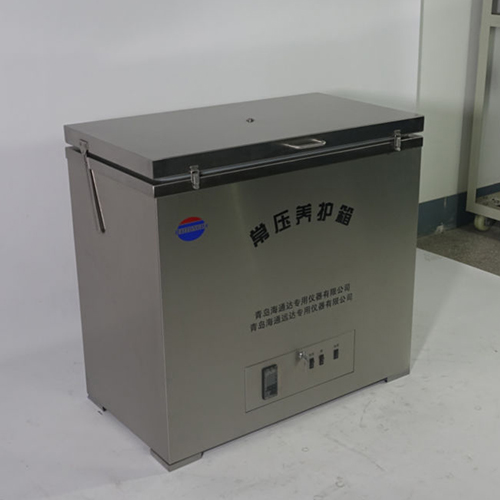Drilling fluid is often referred to as "mud". If drilling engineering is compared to the human body, then drilling fluid is its blood. It is a general term for circulating fluids used to meet the needs of different aspects of drilling engineering throughout the entire oil and gas production process. Drilling fluid is a single component that keeps in contact with the wellbore during the whole drilling process. Its main function is to design the drilling fluid formula so that the drilling project can be successfully completed in the wellbore to reach the expected oil formation. So what is the development process of drilling fluid?

Development Overview of Drilling Fluids
1. Initial formation period: From 1888 to 1928, rotary drilling began, initially with clear water.
2. Period of rapid development: From 1928 to 1948, it was found that mud with sand had better carrying capacity than clear water. Thus finely dispersed drilling fluids appear and simple treatments are used.
3. High-speed development period: From 1948 to 1965, it was found that the finely dispersed mud was insufficient: the anti-invasion ability was poor, so it was developed into a coarsely dispersed drilling fluid with calcium treatment and moderate flocculation.
4. Scientific optimization period: 1965~, in high-pressure jet drilling, low solid phase was required, so polymer non-dispersed low solid phase drilling fluid appeared.
From the end of the 1980s to the beginning of the 1990s, drilling fluid systems such as positive gel, silicate, formate, polyol, and biodegradable have appeared successively, and have been widely used. However, none of them have formed the mainstream and cannot completely replace the polymer drilling fluid system.

At the same time, the oil-based drilling fluids that have been used since the 1940s are also developing continuously, from crude oil to diesel oil to mineral oil; from all oil-based to water-in-oil emulsion drilling fluids; from toxic and polluting Oil-based is developed into a low-toxic and non-toxic oil-based drilling fluid.

 English
English Español
Español Português
Português русский
русский français
français 日本語
日本語 Deutsch
Deutsch Tiếng Việt
Tiếng Việt Italiano
Italiano Nederlands
Nederlands ไทย
ไทย Polski
Polski 한국어
한국어 Svenska
Svenska magyar
magyar Malay
Malay বাংলা
বাংলা Dansk
Dansk Suomi
Suomi हिन्दी
हिन्दी Pilipino
Pilipino Türk
Türk Gaeilge
Gaeilge عربى
عربى Indonesia
Indonesia norsk
norsk اردو
اردو čeština
čeština Ελληνικά
Ελληνικά Українська
Українська Javanese
Javanese فارسی
فارسی தமிழ்
தமிழ் తెలుగు
తెలుగు नेपाली
नेपाली Burmese
Burmese български
български ລາວ
ລາວ Latine
Latine Қазақ
Қазақ Euskal
Euskal Azərbaycan
Azərbaycan slovenský
slovenský Македонски
Македонски Lietuvos
Lietuvos Eesti Keel
Eesti Keel Română
Română Slovenski
Slovenski मराठी
मराठी Српски
Српски 简体中文
简体中文 Esperanto
Esperanto Afrikaans
Afrikaans Català
Català עִברִית
עִברִית Cymraeg
Cymraeg Galego
Galego 繁体中文
繁体中文 Latvietis
Latvietis icelandic
icelandic יידיש
יידיש Беларус
Беларус Hrvatski
Hrvatski Kreyòl ayisyen
Kreyòl ayisyen Shqiptar
Shqiptar Malti
Malti lugha ya Kiswahili
lugha ya Kiswahili አማርኛ
አማርኛ Bosanski
Bosanski Frysk
Frysk ជនជាតិខ្មែរ
ជនជាតិខ្មែរ ქართული
ქართული ગુજરાતી
ગુજરાતી Hausa
Hausa Кыргыз тили
Кыргыз тили ಕನ್ನಡ
ಕನ್ನಡ Corsa
Corsa Kurdî
Kurdî മലയാളം
മലയാളം Maori
Maori Монгол хэл
Монгол хэл Hmong
Hmong IsiXhosa
IsiXhosa Zulu
Zulu Punjabi
Punjabi پښتو
پښتو Chichewa
Chichewa Samoa
Samoa Sesotho
Sesotho සිංහල
සිංහල Gàidhlig
Gàidhlig Cebuano
Cebuano Somali
Somali Точик
Точик O'zbek
O'zbek Hawaiian
Hawaiian سنڌي
سنڌي Shinra
Shinra հայերեն
հայերեն Igbo
Igbo Sundanese
Sundanese Lëtzebuergesch
Lëtzebuergesch Malagasy
Malagasy Yoruba
Yoruba









